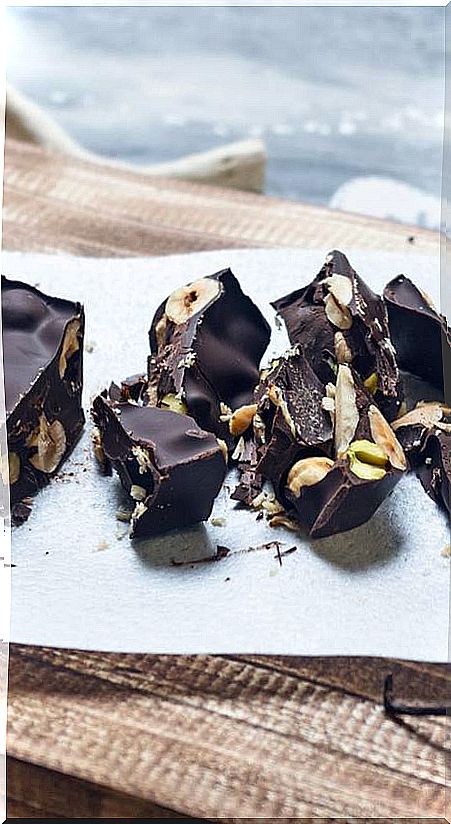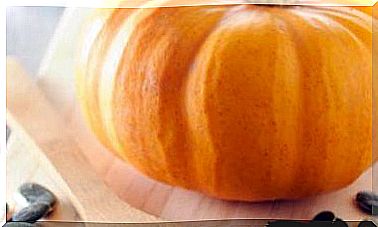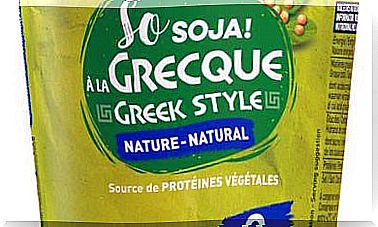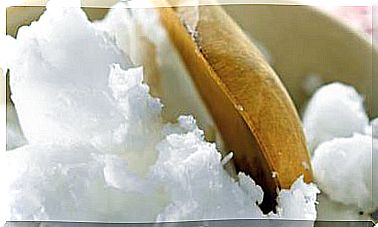4 Homemade Nougat: Make Them Healthier (and Vegan)!
Traditional nougats are basically sugar and almonds. We can make them something healthier very easily at home. Do you dare with the chocolate one?

The nougat is one of the most consumed sweets this time. There are a lot of varieties, from the traditional classics (soft and hard nougat) to the novelties of recent years that combine desserts and nougat (strawberry yogurt nougat, rice pudding, etc).
The traditional nougats are mainly sugar with toasted almonds, to which other ingredients or other processes are added to obtain the different varieties. For example, with crushed almonds and sugar, soft nougat. And with almonds, sugar and egg white, the hard nougat (also known as nougat).
Chocolate nougat (with nuts or puffed cereals) and coconut nougat also have a history .
How to make each type of nougat at home
It is easy to make nougat at home, and so is veganizing them, since we have alternatives for almost everything.
1. Soft nougat
In the case of soft nougat, we do not need the egg white that many manufacturers add to achieve greater consistency: we only need patience, since they will retain their shape if we make them days in advance and keep them well wrapped.
The characteristic flavor of these nougats is toasted almonds. Use marcona almonds preferably, buy them raw and toast them yourself at home in the pan (without oil) or in the oven.
In the same way you can make soft peanut or walnut nougat. Instead of almonds, use peeled and roasted peanuts, walnuts or hazelnuts before grinding them.
Then it is usually mixed with a good amount of sugar that provides sweetness, stability and that honeyed consistency. You can always add less sugar than your recipe calls for or use a substitute that adds sweetness.
Dates and dried figs serve us very well (remember that date bread and fig bread are also sweet for these dates). If they are very dry, let them soak in hot water first, then drain them very well and beat them with the mixer. Mix the nuts with this paste and if necessary beat it all together again until you get the nougat paste.
2. Hard nougat
To make hard nougat, you can use aquafaba instead of egg whites. This liquid from the cooking of the chickpeas mounts wonderfully like egg whites. You can follow any recipe for nougat to make it. Just remember not to put the mixture on the fire since then the whole invention would be disassembled.
Wafers are usually vegan, but you can check. Most are made with tapioca, potato, or rice starch. You can also look for them in online stores, and edible ink printer paper wafers also work for you.
3. Chocolate nougat
One of the easiest nougat to make at home and less cumbersome is the dark chocolate nougat.
It basically consists of making a thick tablet with your choice of nuts or puffed cereals ( puffed rice is “the old one”). You only need the ingredients that you like the most and chocolate to melt.
If you want you can add candied fruits or marzipan. Do not worry about the “traditional”, the important thing is that you like it (and if you do not take a look at the variety of nougats in any supermarket and you will understand).
4. Dark chocolate nougat with nuts
I propose to make a chocolate nougat with assorted nuts that the truth is that it swells a lot (it is almost all nuts), it is exquisite and it is very easy to prepare.
Choose peeled and raw nuts and toast them at home, or roasted without salt.
For the mold I have cut a vegetable drink tetrabrick lengthwise, so that there is a long and narrow mold that is easy to unmold and non-stick.
Ingredients
- 200 g dark chocolate 85% cocoa (or more)
- 250 g of mixed nuts (I have used almonds, pistachios and hazelnuts)
Preparation
- Chop the chocolate with a knife and put half in a saucepan in a double boiler, stirring from time to time until it is completely dissolved and shiny.
- At that moment, remove the scoop, add the rest of the chocolate and stir it very well while it melts.
- Put it in the water bath again. Add the nuts little by little, stirring well so that they are well covered.
- Take out the saucepan and pour the content into your mold, making good use of what is left in the saucepan, scraping it with a silicone spatula.
- Let it cool to room temperature, and then you can put it in the fridge if you want.









